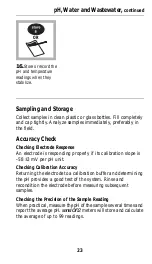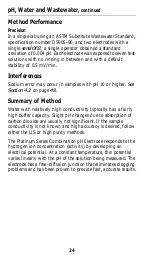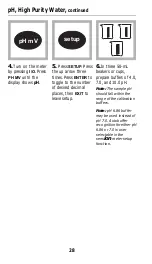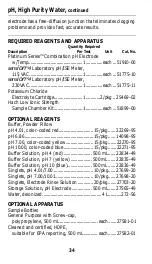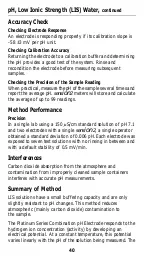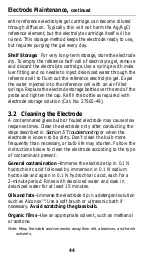
33
pH, High Purity Water,
continued
Accuracy Check
Checking Electrode Response
An electrode is responding properly if its calibration slope is
-58±3 mV per pH unit.
Checking Calibration Accuracy
Returning the electrode to a calibration buffer and determining
the pH provides a good test of the system. Rinse and
recondition the electrode before measuring subsequent
samples.
Checking the Precision of the Sample Reading
When practical, measure the pH of the sample several times and
report the average pH. sens
ion
4 meters will store and calculate
the average of up to 99 readings.
Method Performance
Precision
In a single lab using a 1.8
µ
S/cm standard solution of pH 7.0
and two electrodes with a single sens
ion
™2, a single operator
obtained a standard deviation of 0.05 pH. Each electrode was
exposed to seven test solutions with no rinsing in between and
with a default stability of 0.5 mV/min.
Interferences
Carbon dioxide absorption from the atmosphere and
contamination from improperly cleaned sample containers
interferes with accurate pH measurements.
Summary of Method
High purity water has little buffering capacity. As a result,
small amounts of impurities can cause large changes in pH.
This method minimizes atmospheric (mainly carbon dioxide)
contamination of the sample.
The Platinum Series Combination pH Electrode responds to the
hydrogen ion concentration (activity) by developing an
electrical potential. At a constant temperature, this potential
varies linearly with the pH of the solution being measured. The





